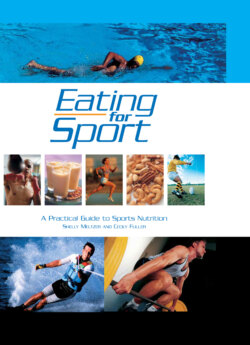Читать книгу Eating for Sport - Shelly Meltzer - Страница 23
ENERGY SYSTEMS (HOW FUELS ARE USED)
ОглавлениеATP (adenosine triphosphate) is the energy that powers all cellular functions, including muscle contraction. There is only enough ATP in the muscle for a short burst (a few seconds) of muscular effort and it must be constantly replenished. (See also p148.) The body uses four different energy systems. They are:
▪ the (ATP-CP) phosphagen energy system. The ATP in the muscle and creatine phosphate collectively provide enough energy for 5–10 seconds of activity.
▪ the anaerobic glycolytic system involves metabolism of blood glucose and muscle glycogen in the absence of oxygen. This system is used predominantly in high-intensity exercise lasting from 30 seconds to 3 minutes. After one minute exercise becomes increasingly aerobic.
▪ the aerobic glycolytic system involves metabolism of carbohydrate in the presence of oxygen.
▪ the aerobic lipolytic system involves metabolism of fat in the presence of oxygen.
The muscles do not use one energy system exclusively, but a combination in which one will predominate, depending on the intensity and duration of exercise (see graph opposite, top). The work rate (power multiplied by duration) determines the total quantity of fuel used, while the intensity (power) determines the proportion of carbohydrate and fat oxidized. During moderately strenuous exercise that can be maintained for 90 minutes, less carbohydrate and more fat is used (see graph opposite, bottom). Regardless of the system used, carbohydrate is always a critical part of the fuel mix.
VO2 max
One of the ways to measure fitness is by the volume of oxygen you can consume while exercising at your maximum capacity. This is expressed as VO2 max – the maximum amount of oxygen in millilitres that you can use in one minute per kilogram of body weight.
Intensity and duration are the major determinants of the energy system used (see p30).
Effect of duration and intensity of exercise on fuel oxidation (a) at 70% VO2 max and (b) at 40% VO2 max (adapted from Bosch et al, 1994).
